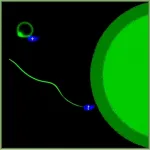Comb-like etching regulated growth for large-area graphene nanoribbon arrays
2021-02-04
(Press-News.org) The rapid development of silicon-based transistors leads to its integration getting closer to the limit of Moore's law. Graphene is expected to become the next generation of mainstream chip materials due to its ultra-high carrier mobility. However, it is difficult to obtain a high on/off current ratio for intrinsic graphene-based transistor owing to the absence of bandgap. Graphene nanoribbons, which possess a tunable bandgap and unique optoelectrical properties, have attracted extensive attention and exploration.
Nowadays, the preparation of graphene nanoribbons is underdeveloped, and common strategies include the clip of carbon materials (graphene films, carbon nanotubes, or graphite) and direct-growth on a specific substrate surface. All these methods are inspiring but also exhibit narrow scope--they require concession steps to prepare precursors or pre-functionalize substrate as templates. The hundreds of nanometers in length, alignment problem and cumbersome preparation process have retarded the integration of graphene nanoribbons into optoelectronic devices. Therefore, a robust nanotechnology to fabricate GNR with mass production, high quality, and uniform orientation are highly desired for commercialization.
In a new research article published in the Beijing-based National Science Review, scientists at the Institute of Chemistry, Chinese Academy of Sciences, Beijing China and at the Applied Mechanics Laboratory, Department of Engineering Mechanics and Center for Nano and Micro Mechanics, Tsinghua University, Beijing, China, developed a comb-like etching regulated growth process to in-situ fabricate graphene nanoribbon arrays in a template-free CVD system. They also disclosed the growth mechanism by the density functional theory (DFT) based first-principle calculations.
"The introduction of tenuous hydrogen flow is the key factor for realizing the comb-like pattern that promises to achieve the selective growth of graphene nanoribbons in place of the conventional graphene film growth on the liquid Cu surface (Figure 1)." they add. "The distinctive design allows for precisely controlling over width, edge structure, and orientation of graphene nanoribbons."
To data, the mass production of graphene nanoribbons is limited by the preparation process. "After the in-situ comb-like etching regulated growth process was completed, a large-area GNR array with a uniform orientation was well dispersed over the resolidified Cu surface." they state.
"The changes of experimental conditions allow for dominating the width and edge structure of graphene nanoribbons, the width decreased to 8 nm with a length of up to 3.1??m (aspect ratio of 387)." Moreover, the as-grown graphene nanoribbons have the smooth and sharp edges with zigzag motif. The scientists demonstrate.
Hydrogen plays a dual role in the formation of graphene by CVD technique. "Owing to the self-limiting growth mechanism, the in-situ formation of graphene nanoribbon arrays operates through stepwise mechanisms, involving an intermediate growth-favored state and a consecutive etching-favored stage. The conversion depends mainly on the catalytic activity of liquid copper surface passivated by as-grown graphene." they add.
The approach is operationally simple and efficient, offering an assurance for the use of GNR arrays in integrated circuits.
INFORMATION:
This research received funding from the Strategic Priority Research Program of the Chinese Academy of Sciences and the National Natural Science Foundation of China.
See the article:
Le Cai, Wanzhen He, Xudong Xue, Jianyao Huang, Ke Zhou, Xiahong Zhou, Zhiping Xu, and Gui Yu
In situ growth of large-area and self-aligned graphene nanoribbon arrays on liquid metal
National Science Review, nwaa298,
https://doi.org/10.1093/nsr/nwaa298
[Attachments] See images for this press release:

ELSE PRESS RELEASES FROM THIS DATE:
2021-02-04
When we think about the links to the future - the global transition to solar and wind energy, tactile virtual reality or synthetic neurons - there's no shortage of big ideas. It's the materials to execute the big ideas - the ability to manufacture the lithium-ion batteries, opto-electronics and hydrogen fuel cells - that stand between concept and reality.
Enter two-dimensional materials, the latest step in innovation. Consisting of a single layer of atoms, two-dimensional materials like graphene and phosphorene exhibit new properties with far-reaching potential. With a capability to be combined like Lego bricks, these materials ...
2021-02-04
CLEVELAND--Researchers at Case Western Reserve University, using artificial intelligence (AI) to analyze simple tissue scans, say they have discovered biomarkers that could tell doctors which lung cancer patients might actually get worse from immunotherapy.
Until recently, researchers and oncologists had placed these lung cancer patients into two broad categories: those who would benefit from immunotherapy, and those who likely would not.
But a third category--patients called hyper-progressors who would actually be harmed by immunotherapy, including a shortened lifespan after treatment--has begun ...
2021-02-04
PITTSBURGH, Feb. 4, 2021 - Researchers at UPMC Hillman Cancer Center and the National Cancer Institute (NCI) demonstrate that changing the gut microbiome can transform patients with advanced melanoma who never responded to immunotherapy--which has a failure rate of 40% for this type of cancer--into patients who do.
The results of this proof-of-principle phase II clinical trial were published online today in Science. In this study, a team of researchers from UPMC Hillman administered fecal microbiota transplants (FMT) and anti-PD-1 immunotherapy to melanoma patients ...
2021-02-04
Despite living in the same part of the Mojave Desert, and experiencing similar conditions, mammals and birds native to this region experienced fundamentally different exposures to climate warming over the last 100 years, a new study shows; small mammal communities there remained much more stable than birds, in the face of local climate change, it reports. The study presents an integrative approach to understanding the climate vulnerability of biodiversity in rapidly warming regions. Exposure to rising temperature extremes threatens species worldwide. It is expected to push many ever closer toward extinction. Thus, understanding ...
2021-02-04
The soundscapes of the Anthropocene ocean are fundamentally different from those of pre-industrial times, becoming more and more a raucous cacophony as the noise from human activity has grown louder and more prevalent. In a Review, Carlos Duarte and colleagues show how the rapidly changing soundscape of modern oceans impacts marine life worldwide. According to the authors, mitigating these impacts is key to achieving a healthier ocean. From the plangent songs of cetaceans to grinding arctic sea ice, the world's oceans' natural chorus is performed by a vast ensemble of geological (geophony) and biological (biophony) sounds. However, for more than a century, ...
2021-02-04
In February 2001, the first drafts of the human genome were published. In this Special Issue of Science, "Human Genome at 20," an Editorial, a Policy Forum, a series of NextGen Voices Letters and a Perspective explore the complicated legacy of the Human Genome Project (HGP). "Millions of people today have access to their personal genomic information, with direct-to-consumer services and integration with other 'big-data' increasingly commoditizing what was rightly celebrated as a singular achievement in February 2001," writes Science Senior Editor Brad Wible.
An Editorial by Claire Frasier, director of the Institute for Genome Sciences at the University ...
2021-02-04
Iodine plays a bigger role than thought in rapid new particle formation (NPF) in relatively pristine regions of the atmosphere, such as along marine coasts, in the Arctic boundary layer or in the upper free troposphere, according to a new study. The authors say their measurements indicate that iodine oxoacid particle formation can compete with sulfuric acid - another vapor that can form new particles under atmospheric conditions - in pristine atmospheric regions. Tiny particles suspended high in the atmosphere - aerosols - play an essential role in Earth's climate system. Clouds require airborne particles, or cloud condensation nuclei (CCN), ...
2021-02-04
For patients with cancers that do not respond to immunotherapy drugs, adjusting the composition of microorganisms in the intestines--known as the gut microbiome--through the use of stool, or fecal, transplants may help some of these individuals respond to the immunotherapy drugs, a new study suggests. Researchers at the National Cancer Institute (NCI) Center for Cancer Research, part of the National Institutes of Health, conducted the study in collaboration with investigators from UPMC Hillman Cancer Center at the University of Pittsburgh.
In the study, some patients with advanced melanoma who initially did not respond to treatment with an immune checkpoint inhibitor, a type of immunotherapy, did respond to the drug after receiving a transplant ...
2021-02-04
Competition among sperm cells is fierce - they all want to reach the egg cell first to fertilize it. A research team from Berlin now shows in mice that the ability of sperm to move progressively depends on the protein RAC1. Optimal amounts of active protein improve the competitiveness of individual sperm, whereas aberrant activity can cause male infertility.
It is literally a race for life when millions of sperm swim towards the egg cells to fertilize them. But does pure luck decide which sperm succeeds? As it turns out, there are differences in competitiveness between individual sperm. ...
2021-02-04
Berkeley -- In the arid Mojave Desert, small burrowing mammals like the cactus mouse, the kangaroo rat and the white-tailed antelope squirrel are weathering the hotter, drier conditions triggered by climate change much better than their winged counterparts, finds a new study published today in Science.
Over the past century, climate change has continuously nudged the Mojave's searing summer temperatures ever higher, and the blazing heat has taken its toll on the desert's birds. Researchers have documented a collapse in the region's bird populations, likely resulting ...
LAST 30 PRESS RELEASES:
[Press-News.org] Comb-like etching regulated growth for large-area graphene nanoribbon arrays


